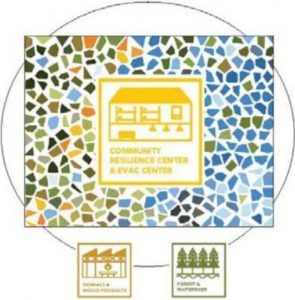Tuolumne Supes To Ply Fed Ties For Resilience Grant Extension
Sonora, CA – Hard-pressed to meet a federal deadline to spend multi-millions in National Disaster Resilience Competition grant monies, local officials found they are not alone.
At Tuesday’s Tuolumne County Supervisors session, Deputy County Administrator Maureen Frank provided a status report update as per the board’s instructions at its Jan. 21 meeting.
Selected in 2017 for a $70 million competitive grant award, Tuolumne County in partnership with the state is working to spend $28 million in Forest and Watershed Health-related activities along with nearly $20 million to build Community Resilience Centers in Tuolumne and Groveland and a $22 million biomass facility.
The catch is that HUD, under whose umbrella related resiliency projects across the nation are being overseen, had established a hard deadline that all funds must be spent by September 2022.
While activities within the Forest and Watershed Health pillar are running well and should be completed by May 2022, the timelines for the development of the resilience centers and biomass plant have been fraught with delays and as reported here, the supervisors pushed county staff to press for HUD to extend its deadline.
Tuesday, Frank confirmed, “We are looking at and – developing conversation with Congress and the federal government, asking for an amendment to the grant agreement to extend it for one year to give everyone a cushion.”
Project Delays Nearly A Universal Issue
She added there are 13 entities that applied and were awarded NDRC funds — and 12 of the 13 are struggling to meet deadlines. Some of the various issues other projects are facing have to do with housing and development, infrastructure and relocation of businesses.
Board Chair Sherri Brennan emphasized that she and Supervisor Karl Rodefer were busily networking avenues towards helping obtain a deadline extension since so many of the projects were dealing with time issues. ‘It will be an opportunity to look…at the federal level. They will be I am sure, reaching out to their legislators in other states because they have the same challenges.”
Frank was optimistic in reporting to the board that property acquisition, contractor contracts and other steps in progress to move the resiliency centers’ projects are clearing necessary hoops and should be ready for the board to review and approve at its March 3 meeting. There is also Phase 2 budget refining underway that will be incorporated into an agreement update.
With so many milestones to track and check off, Frank reported that county staff developed a project accountability chart for all resiliency center related partners at the state and county levels to follow.
Regarding the planned biomass utilization facility, Frank had no news of a related lawsuit; only that it was court docketed for March and the State Attorney General’s office was working on it.
Efforts to further identify more potentially available loans are tied to an action plan amendment with HUD that would expand work scope submitted in the county’s original grant application, broadening what the facility could include by adding additional alternative energy sources. This would further expand business development outreach efforts going on and potentially yield more job creations, which is a key metric for HUD.
To view images of related project plans, click into the image box slideshow.

